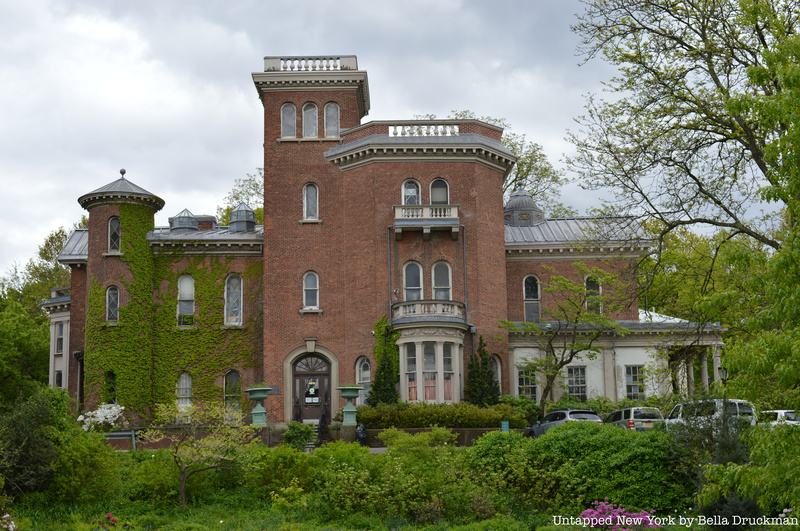4. Litchfield Villa is one of Park Slope’s oldest landmarks

Nestled between the trees of Prospect Park, Litchfield Villa is a sight to behold. Commissioned by railroad and real estate developer Edwin C. Litchfield in 1855, the Italianate-style villa cost $150,000. It was completed two years later in 1857 by Architect Alexander Jackson Davis — known for having also constructed Lyndhurst Manor, Federal Hall, and the Hudson Valley mansion Locust Grove. Over the years, the villa has undergone many changes, with the original coach horse, greenhouse, and chicken house that once surrounded it no longer exists. The villa was named a New York City landmark on March 15, 1966. Today, visitors can marvel at the villa’s ivy-covered walls, corn and wheat-adorned columns, and the Rococo-style decorated Gold Room.
Located on Prospect Park West and 5th Street, Litchfield Villa predates the construction of Prospect Park, which was completed in 1867. As a result, original plans for the park were made to work around the villa, giving it its current majestic forest backdrop. In 1869, the Litchfield family ceded the 50 acres of land used for Litchfield Villa to the City of Brooklyn, which bought the plot for $1.7 million. However, the city allowed for the family to lease the property — and Litchfield, his wife Grace Hill Hubbard (who inspired the villa’s nickname “Grace Hill”), and their five children continued to live in the mansion. Eventually, so heartbroken following the death of Grace in 1881, Litchfield would leave the villa, releasing it solely into the hands of the Brooklyn Parks Commission — which began using the space as its headquarters in 1883.





